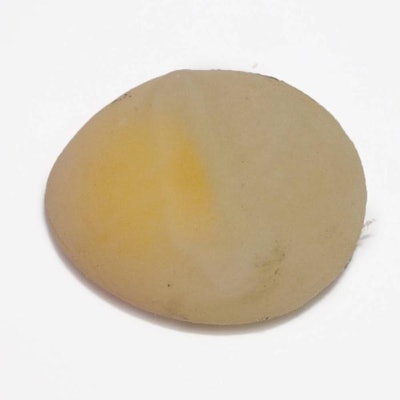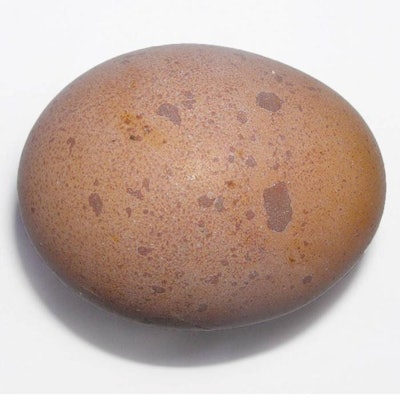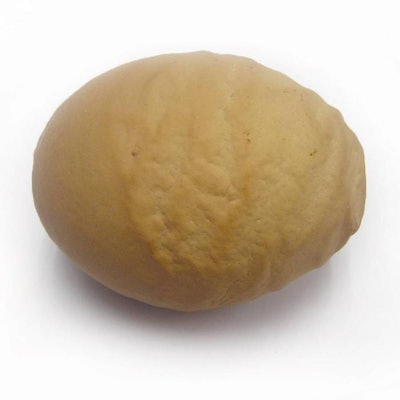This article appears in the June issue of Poultry International. View all of the articles in the digital edition of this magazine.
Shell consistency is the most important characteristic of an egg for egg producers, as it holds the greatest economic advantage in the market.
Poor shell quality results in price reductions and, in some cases, these eggs with poor shells cannot be sold to consumers. However, shell formation can be improved through careful nutritional intervention.
It is crucial that layer diets contain adequate amounts of nutrients, including trace minerals, because they contribute to a variety of biochemical processes, which are directly associated with the growth and development of bone tissue and shell formation.
Which trace minerals?
The trace minerals manganese (Mn), zinc (Zn) and copper (Cu) are essential minerals in the diet of laying hens as they are needed for growth; they play an integral role in the immune system, carbohydrate metabolism, and protein synthesis; and they have specific functions in the formation of bone and eggshells.
Manganese
Manganese is a metal activator of glycosyltransferase and alkaline phosphatase enzymes, which are involved in the synthesis of mucopolysaccharides and glycoproteins that contributes to the formation of the organic matrix of bone and eggshell.
A lack of manganese leads to defects that may include less shell mass. The shell takes on a more rounded shape, with translucent areas around the equator. Microscopy of these shell defects reveals irregular mammary knobs due to the fusion of several mammillary cores the early phases of shell formation.

A lack of manganese in layer feed can result in eggs without shells.
Zinc
Zinc is a cofactor of the enzyme carbonic anhydrase in the uterus. It catalyses the condensation of CO2, and H2O, producing H+ and HCO3. The latter combines with calcium, forming calcium carbonate in the eggshell.
A lack of zinc in layer diets can lead to lower levels of carbonic anhydrase, resulting in shell defects. This is particularly the case in areas with saline drinking water, where eggshell problems tend be more commonly reported if there is not sufficient zinc supplementation.

When there is insufficient zinc in the diets of layer hens, shell pigment can be affected.
Copper
Copper is an essential element for reproduction, growth, development of connective tissue and skin pigmentation. It is a component of blood proteins such as erythrocuprein, found in erythrocytes, which is active in many enzyme systems and is also essential for normal bone formation.
The lack of copper in laying diets can lead to a higher incidence of eggs produced with peel malformation.
In addition to specific functions in bone formation and eggshells, these micro trace minerals have other functions that are essential for optimal growth and productivity in laying hens.

Corrugated eggshells can be the result of laying hens receiving insufficient copper in their feed.
Shell quality with organic mineral use
Various studies suggest that organic minerals rather than inorganic forms may offer several benefits.
In organic minerals, molecules are combined chemically to form proteins and/or amino acids in the form of yeast-derived biosynthesis (in the case of selenium), which prevents reoccurring interactions with other minerals or dietary components along the gastrointestinal tract.
Consequently, there is a greater utilization by the laying hen and lower excretion to the environment, contributing to improved internal and external quality of the egg.
Internal benefits
The internal quality of the egg fundamentally depends on the storage conditions the egg is kept in. There is strong evidence that suggests using organic minerals in the form of chelates, reduces the likelihood of cracks, and the overall quality of the egg improves by 6 percent.
4 tips to improve eggshell resistance in aging layers
www.WATTAgNet.com/articles/23903
copper-deficiency-ccorrugated eggs-1606PIlayernutrition3-
Corrugated eggshells can be the result of poor of laying hens receiving insufficient copper in their feed.
copper-deficiency-ccorrugated eggs-1606PIlayernutrition3-
Corrugated eggshells can be the result of poor of laying hens receiving insufficient copper in their feed.
















